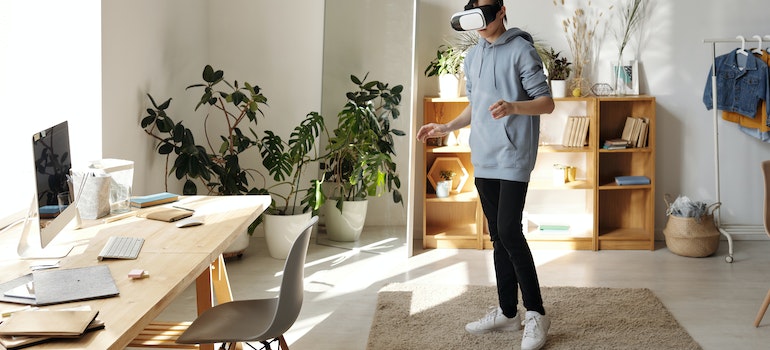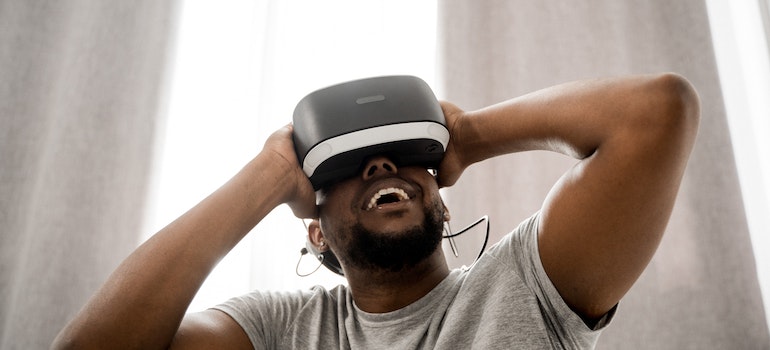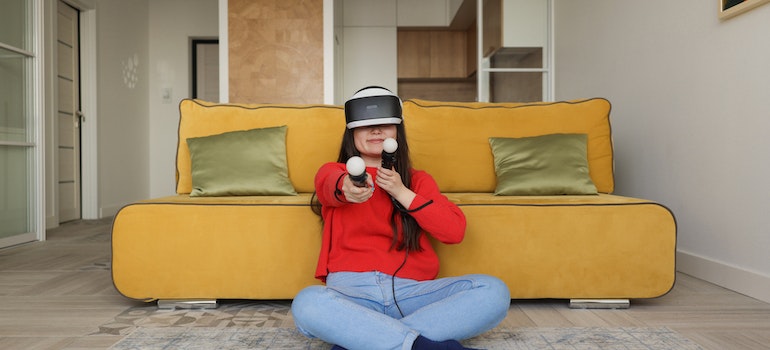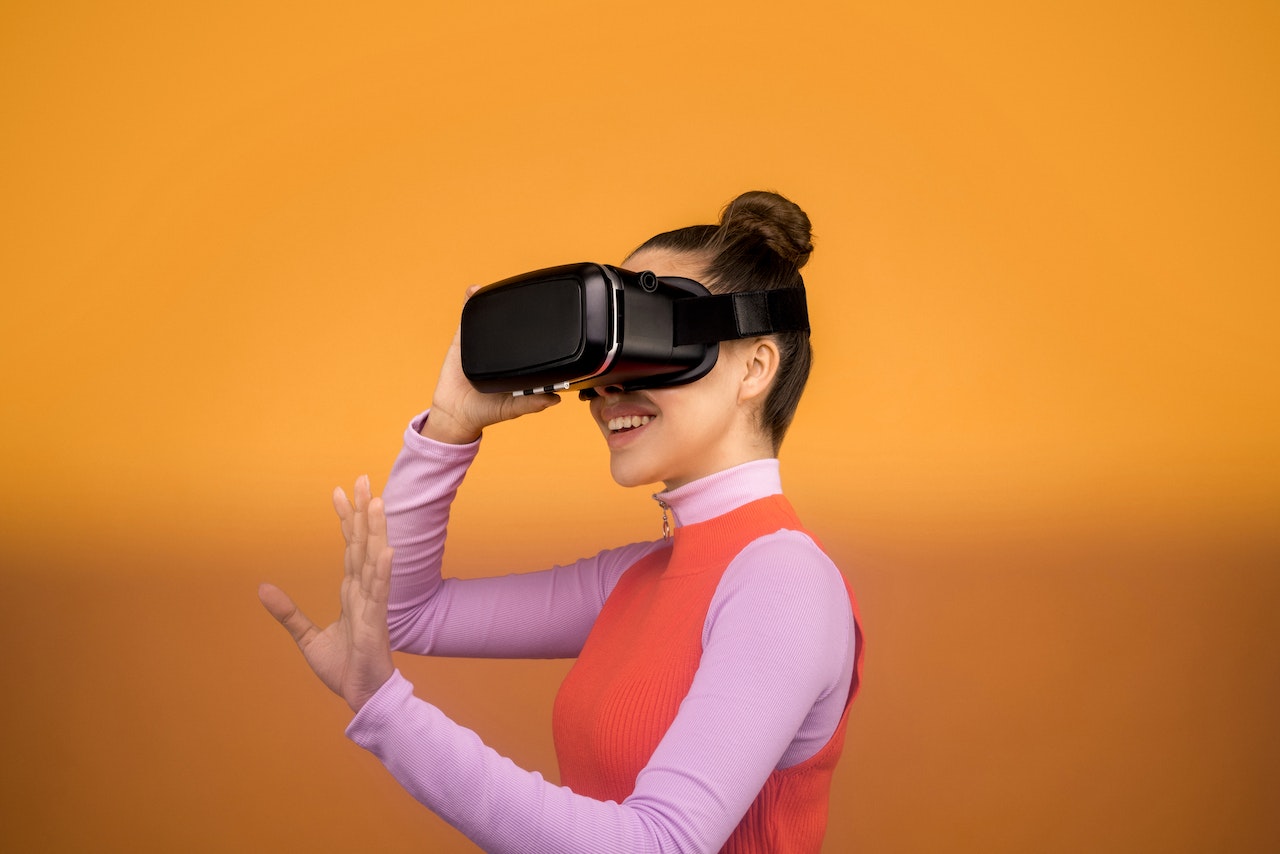In today’s fast-paced world, technology is constantly changing and shaping the way we live our lives. One particular innovation that has had a significant impact on various industries is virtual reality (VR). However, one significant impact of VR is virtual reality in the moving process. Traditionally, moving to a new home or office meant spending countless hours visiting potential properties and visualizing how your belongings would fit into the new space. This process was often time-consuming and stressful. However, with VR, customers now have the opportunity to experience a realistic and immersive virtual tour of their new space before making any commitments. Join Verified Movers in exploring what changes will this new technology bring to customers looking to relocate.
What Exactly is Virtual Reality?
Virtual reality (VR) is not just a technological marvel. It’s a gateway to limitless possibilities. From immersive gaming experiences to innovative medical applications, VR has transcended the boundaries of our imagination. Virtual reality is a simulated experience that can be similar to or completely different from the real world. It typically involves the use of a headset and motion-tracking sensors to create an immersive environment. By creating a simulated environment that can replicate or surpass reality, Virtual reality technology has transformed various industries, including the moving process.

In the realm of moving, VR has revolutionized how customers navigate the overwhelming task of finding a new home. Gone are the days of physically visiting numerous properties. VR now allows potential buyers or renters to explore properties with astounding detail and realism virtually. Through immersive 3D virtual tours, customers can walk through rooms, examine architectural intricacies, and even sense the ambiance of their potential future homes—all from the comfort of their living room.
Virtual Tours: The Next Level of Property Viewing
Virtual reality technology allows customers to walk through and explore a property from the comfort of their own homes. Moving companies equipped with VR capabilities can create stunning 360-degree virtual tours that provide an accurate representation of the property’s layout and dimensions. Customers can navigate through different rooms, examine details, and get a realistic sense of the space, all without physically being present.
The advantages of virtual tours are plentiful. Customers no longer need to travel long distances to visit potential properties, saving time and money. Additionally, virtual tours eliminate the need for customers to rely solely on photos and floor plans when making important moving decisions. They can now feel confident about their choices by immersing themselves in the virtual environment and experiencing it as if they were physically present.
Accurate measurements and planning
When it comes to moving, one of the most critical aspects is accurately measuring the dimensions and layout of both the current and new spaces. Traditionally, this would involve physically measuring each room and relying on hand-drawn floor plans. However, virtual reality simplifies the process by providing precise measurements and allowing customers to visualize how their furniture and belongings will fit into the new space.
Moving companies equipped with VR technology can provide customers with augmented reality tools that allow them to virtually place their furniture and other items in the new space. This not only helps customers determine if their furniture and belongings will fit. It also allows them to experiment with different arrangements without the physical effort of moving heavy objects.
Reducing stress and uncertainty
Moving is often considered one of life’s most stressful events. Not only is the physical act of moving demanding. The uncertainty surrounding the new space and the logistics of the move can also add to the stress. However, virtual reality can alleviate some of these concerns by providing a realistic and interactive experience.

With virtual reality, customers can walk through their new space. They can examine the layout and make important decisions on the placement of their furniture. This level of control and familiarity helps to reduce anxiety and uncertainty. Additionally, it allows customers to feel confident and reassured about their move.
Improved communication and collaboration with virtual reality in the moving process
Virtual reality also plays a vital role in enhancing communication and collaboration during the moving process. With VR technology, customers can virtually communicate with movers, interior designers, and other stakeholders involved in the move. Customers can share their virtual tours with family members or colleagues. That way, they can gather feedback and suggestions without the need for everyone to be physically present. This promotes more efficient decision-making. It streamlines the coordination process and ensures that everyone involved has a clear understanding of the moving plans.
Sustainable advantages of VR in the moving process
In addition to the convenience and stress-reducing capabilities, virtual reality in the moving process also offers significant advantages in moving sustainably. Virtual tours eliminate the need for physical travel to multiple properties. That way, you’re reducing carbon emissions and minimizing the negative environmental impact associated with transportation.
Moreover, virtual reality significantly reduces the use of plastic and paper materials traditionally used in the moving process. With virtual tours, customers no longer require excessive amounts of brochures, floor plans, and other physical documents. This reduction in paper waste contributes to a more eco-friendly moving process.
Will Moving Change and Adapt to the Use of VR?
As the world continues to embrace technological advancements, virtual reality is poised to become an integral component of the moving process. Moving companies that adopt virtual reality technology not only provide a unique and innovative experience to their customers. But also differentiate themselves in a highly competitive industry. By embracing virtual reality, moving professionals can cater to the evolving expectations and moving needs of Gen Z and other customers, improving customer satisfaction and loyalty.

Stepping Into the Future of VR in the Moving Process
In conclusion, virtual reality is transforming the moving process by offering customers a realistic and immersive experience. With virtual reality in the moving process, accurate measurements, reduced stress, improved communication, and sustainability advantages, Virtual reality is revolutionizing the way we approach moving. As technology continues to advance, it’s safe to say that VR will play a significant role in the moving industry future. Embracing VR technology now allows moving professionals to adapt and thrive in an ever-changing landscape. Ultimately delivering enhanced services and experiences to their customers.




